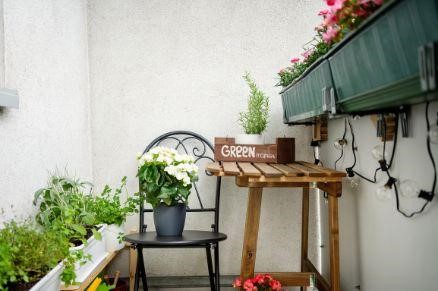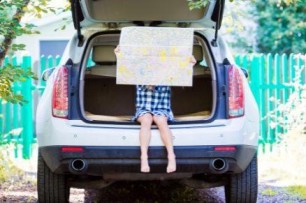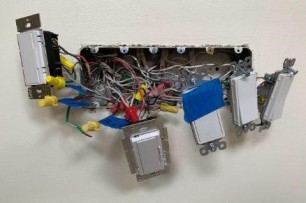General Insurance Blogs, Articles & Updates by - Magma HDI
Have us call you
- RENEW YOUR POLICY
- BUY NEW POLICY

Considering installing a solar panel rooftop? Here’s all you need to know
When switching to a sustainable energy source like solar, it is wise to conduct a careful study because this is an expensive purchase you will have to live with for 25 years. In this post, we will provide essential questions so you can learn everything you need to know before installing solar panels on your home. These solutions will simplify your solar journey.
1. How much can solar power reduce your household electricity costs?
The monthly savings from solar for household electricity users can be as much as 80%, and in certain circumstances, even more. Before ordering a solar system, determine how much money you will save.
2. Can you utilise net metering at your house? When should you apply if the answer is yes?
Savings from solar can be maximised using a net metering feature in conjunction with an on-grid or hybrid solar system. In exchange for payment, you can export the extra electricity your solar system produces to the grid.
Now, homeowners in all of India's states can use the facility. However, the advantages may vary based on the tariffs established by the individual states. Before and after your solar PV system installation, you can apply for net metering. Nonetheless, we advise you to apply for net metering before the system is installed for your convenience.
3. How much would it cost for your rooftop solar system?
Over the past ten years, solar system prices have decreased significantly. A typical 1 kilowatt (kW) solar system, which cost about INR 145 per watt (Wp) in 2000, is now available for about INR 35 per Wp. However, the final price varies according to the project's size, the skill level of the solar installer, and component quality.
Residential solar systems are often smaller than commercial or industrial ones, and because of the smaller scale of operations, the cost per KW tends to be more significant. The essential thing in this situation is not to hold back on the components' quality or the installer's knowledge.
4. When will your solar system reach financial stability?
With a properly installed household solar system, you should reach your breakeven point in about three and a half years. However, the system size and the state's DISCOM tariff rate affect the breakeven point. The critical thing to remember is that since solar energy returns come in the form of savings, they are guaranteed. You can use a solar calculator to determine your expected payback period and return on investment.
5. Is the rooftop of your house a suitable location for solar panel installation?
It is crucial to examine the capacity of your rooftop. Your rooftop needs to support the combined weight of the mounting structures and the panels. A rooftop must be free of any shadows cast by surrounding structures or objects because most homes in India are constructed too close to one another.
6. Are there any tax benefits for your residential solar investment?
Household electricity is not currently eligible for any tax incentives. However, the investment is worthwhile, though, because the savings on electricity bills alone are substantial.
After investing in such sophisticated technologies and energy sources, it becomes crucial to protect your home against any unforeseen contingencies. In such cases, the best home insurance in India can also assist you in significantly reducing your financial outlay by protecting your home, its structure, and content from unexpected loss or damages.
Click HERE to buy the best home insurance in India.
Disclaimer: The information provided above is for illustrative purposes only. To get more details, please refer to policy wordings and prospectus before purchasing a policy.

Collisions: Types and how to avoid them
Accidents, unfortunately, happen far too frequently. They cause vehicle owners to pay for auto repairs, treating injuries, and increased insurance premiums when accidents occur. A small error might lead your car to be totaled in an instant. Purchasing a policy from a reliable motor insurance company in India secures you and your vehicle from various hazards and damages that could cause financial losses.
We repeatedly observe the same trends that lead to collision incidents. To decode this most common issue, we're presenting the most typical crash types and accident-prevention advice to make the roads safer.
1. Front-impact collisions:
When the front of your vehicle collides with another car or object, it is called a front-impact accident, accounting for 54% of all auto accidents. It can result from wrong-lane driving or a poor indication by the approaching vehicle from the front, especially while making turns.
How to avoid them:
Modify your driving according to the circumstances, such as slick roads or other weather-related issues. Give yourself more time to react and take control by driving more slowly in the rain and using indicators while taking turns. Keep your focus on the road and avoid any distractions.
2. Rear-end collisions:
Heavy commuter traffic on roads and thoroughfares, over-speeding, aggressive driving, and leaving insufficient room for the car in front of you are the common causes of rear-end collisions.
How to avoid them:
Driver distraction accounts for 89% of rear-end collisions. Avoid being distracted by putting the phone down, even in driving mode, and adjusting your audio. Additionally, stay aware of your surroundings and avoid tailgating by not maintaining a safe distance from the vehicle in front.
3. Parked-car collisions:
In crowded parking lots, bumper dents are all too typical. They occur when several vehicles travel in various directions or while reversing out of a parking space.
How to avoid them:
Parking lots can make viewing your surroundings challenging, especially when reversing. Before leaving a parking space, survey the area and use your rear-view mirror effectively. Park a bit further away from other vehicles.
4. Side-impact collisions:
Side impacts between cars travelling in different lanes parallel to one another are the norm in cases of sideswipes. This kind of accident accounts for 27% of fatal passenger crashes.
How to avoid them:
Refrain from speeding to beat the yellow light. Instead, be extra cautious and always check both ways at stop signs and traffic lights. Check your blind spot before changing lanes, and watch for sudden lane changes from other motorists.
5. Hydroplaning collisions:
Since the tyres can't touch the pavement when you hydroplane, you have little control over the direction of the automobile, which almost definitely results in a collision. More than 10% of car fatalities yearly are related to wet roadways.
How to avoid them:
Stop accelerating, and don't stamp your foot on the brakes if your car does hydroplane. Instead, keep the pressure constant and let the automobile slow down. Make sure the tread on your tyres isn't too worn out. When driving through significant road puddles, proceed slowly.
Although there are many steps you may take to lessen the risk of accidents, theft, injuries, or damage to your car, it's not always possible to avoid the unexpected. In road accidents, collisions are a significant factor in injury and fatalities. We recommend purchasing a comprehensive auto insurance policy from a trusted motor insurance company in India. This will protect you and your vehicle against various damages and provide monetary compensation for expenses resulting from theft, fire, natural disasters, third-party liabilities, accidents, and other tragedies.
Click HERE to learn more about the policies offered by the best motor insurance company in India.
Disclaimer: The information provided above is for illustrative purposes only. To get more details, please refer to policy wordings and prospectus before purchasing a policy.

A clutter-free home is not a distant dream with our simplified guide
After purchasing your home, maintaining and protecting it becomes the highest-ranked priority. Keeping a clutter-free home helps you bring positivity and a better sense of well-being. While buying the best home insurance policy in India can help shift the burden of contingencies like burglary, vandalism, etc., how do we safeguard our homes from habits like hoarding and stockpiling?
If you find it challenging to keep your home clutter-free, here is a short guide to maintaining and optimising your space.
1. Identify clutter:
Our physical, mental, and emotional lives can become cluttered with irrelevant items. But what appears to be clutter may be an extraordinary item for you. Physical clutter usually occurs when we have too much stuff and no orderly mechanisms to store them. Owning less stuff makes your home clutter-free and more accessible. Having less material also positively affects our time, lives, and energy.
2. Get rid of the extra:
Eliminating the surplus items that consume our lives, time, and energy is the first step in keeping your home clutter-free. Clutter can be described as having too much stuff in a limited space, resulting in a disorganised home. Slowly navigate from room to room while using this filter to weed out items that are not required.
3. Avoid acquiring too many possessions:
Clutter can be efficiently managed by effective space management. You need to understand that the goods cost more than what is listed as their final retail price. We must alter our perspective and assess our purchases differently to stop the accumulation of goods in our houses. Start by asking yourself these questions before making a purchase –
● When I get it home, will there be a place to store it?
● Exactly why am I purchasing it?
● What value does it bring to our home and well-being?
4. Establish routines to manage your clutter:
Finding and creating routines to effectively manage your belongings will be the easiest way to remove the surplus. After removing the excess, it will be easier to identify the practices that keep your living environment clutter-free. Also, you'll find it simpler to adopt these habits once you've experienced the independence and stress-free lifestyle that comes with living clutter-free.
Clutter draws more clutter, and it needs to be eliminated. Create healthy habits for your family to control how your home's possessions are used regularly. They will be simpler to apply once you've identified them.
5. Plan decluttering maintenance times:
The most crucial step is to make a timetable and follow it. You can do this daily, weekly, monthly, quarterly, or seasonal. Remember, you need to declutter and organise regularly.
You'll feel better about your clutter-free home if you're disciplined about following through with your maintenance program. The more time passes between your regular sessions, the more you'll notice that your house could be cleaner and more orderly.
Building habits around clearing up excess clutter should be prioritised in your daily routine. The critical components to living in a clutter-free environment are recognising and knowing what to do with it and having the discipline to carry it through.
The beautiful thing about decluttering your house is that your efforts will have a long-lasting good impact on your sense of self-worth and how you regard your living space. While this will help protect the area inside your home and make better choices as per your tastes, buying the best home insurance policy in India provides the safety of external protection for your house.
Click HERE to buy the best home insurance policy in India.
Disclaimer: The information provided above is for illustrative purposes only. To get more details, please refer to policy wordings and prospectus before purchasing a policy.

Here are some tips to improve your home’s appeal in minutes
The first impression your house has on the visitors can be everlasting as they leave. It is a huge deal to keep your home tidy, chic, and beautiful. It can make you garner a lot of accolades from your fellow friends and family members.
However, the whole process can be tedious as the remodelling or redesigning can take time and effort. What if we tell you that you can make your house look appealing in a few hours? As shocking as it may sound, we have curated a list of the best ways to spice up your home’s aesthetic appeal. These ways are innovative, easy, and do not require much time or money.
Also, your house has a high perceived value and should be well protected. Hence, you must consider purchasing home insurance to keep your home and belongings safe from contingent events like burglary, vandalism, natural calamities, property destruction, etc.
However, if you are planning to make your home look better and more appealing to the guests or want to refresh the look of your home as per changing trends or your taste, then take a closer look at the following points.
1. Make your lighting better:
Lighting can make a big difference to your home appeal. You must have bright, chic, and charismatic lighting around your house. You can also spice up your bedroom lights by adding a touch of fairy lights or mood lighting. An addition of golden-hued lights to the dining area and living room adds to the ambiance.
2. Conceal the garbage bags and dustbins:
Nobody likes to see trash lying around in their homes. It can create a terrible impression on your visitors. When guests come over, you must thoroughly scan your house and conceal your garbage bags. Put them in a place that is not easily visible to your guests. A permanent solution could be to switch up your interiors to create a covered dustbin storage section.
3. Trim your lawn:
If you have a lawn, you must trim the grass before guests visit. You can also discard the weeds and pull them out from the yard. Additionally, spray fertiliser all over the lawns. A gentle trim can make a lot of difference to your home’s appeal in minutes.
4. Create symmetry:
Who does not like symmetry? You must follow a symmetrical pattern while displaying accessories, decorative pieces, and even lights. From your door frame to the lights on the lawn, make sure everything is balanced. It can thoroughly elevate the visual appeal of your home by manifolds.
5. Elevate your front door:
The front door is the first thing every visitor sees before entering your house. You can make it look more appealing by adding simple door decor to it. You can hang a wreath of pastel colours or any floral designs you like. Do not overdo it. Keep it simple yet elegant.
These simple yet effective tips can spruce up your house's visual appeal in minutes. You do not need much money, effort, or even skills to complete it. These quick, effortless tasks bring about a significant change around your home. You will surely get a lot of appreciation from your fellow visitors.
While considering the options for revamping your home’s aesthetic appeal, we also urge you to consider purchasing home insurance to rely upon if things go wrong.
Click HERE to buy the best home insurance in India.
Disclaimer: The information provided above is for illustrative purposes only. To get more details, please refer to policy wordings and prospectus before purchasing a policy.

Worried about driving alongside heavy vehicles? Here’s all you need to know
Driving is a tricky activity that requires extreme responsibility. One minor mistake can land you in serious trouble. It is always advisable to take extra precautions while driving. Be it a two-wheeler or four-wheeler, one should be cautious while driving, such as following all the traffic rules and being mindful of your surroundings.
Driving along heavy vehicles can be challenging, as they are different from other vehicles. They are so heavy that the controls are not always in the driver's arena. It can become dysfunctional and cause havoc on the road. Therefore, driving carefully around heavy vehicles is always recommended to avoid collisions.
Drivers of light vehicles must always be on high alert when around heavy vehicles. While collisions between vehicles of any size are disastrous and result in significant physical, mental, and financial damages, one between a heavy and light vehicle can be catastrophic.
Purchasing motor insurance from a reliable motor insurance company and following the below-stated tips can help you safely and confidently drive alongside heavy vehicles.
1. Always maintain distance:
Heavy vehicles can be intimidating to drive alongside, even as a beginner or an experienced driver. Crashes are common when other cars are driving too close to them. You need to maintain a safe distance from all heavy vehicles. Additionally, you should always maintain adequate distance from other cars as well. This will give you ample time to apply the brakes in an emergency.
2. Do not overtake:
Trucks or loading vehicles require a lot of space while turning on roads. It also prevents them from looking at the rear end of the truck. Your car can hence fall upon the blind spot. To prevent this, you should always give the heavy vehicle enough time to turn completely. Refrain from overtaking these vehicles or turning quickly in front of them. Slow down and wait for them to pass.
3. Have a firm grip on the steering wheel:
You must maintain your grip on the steering wheel. Air turbulence is created whenever a heavy vehicle is driving in front, which can be a problem for your car. Large vehicles can also throw loose gravel, dust, or snow that can hinder your vision. You need to be mindful and aware while driving behind them. Ensure that your windshield wipers are functioning properly to maintain proper visibility. Use horn, passing light, and indicators appropriately to ask for a side.
4. Be mindful of the lanes:
It is always recommended to follow the lane rule or discipline diligently while you drive on the road. This also means that you should not shift lanes hastily. It can lead to accidents sooner than later. It is because trucks take time to move and slow down. They may not see your vehicle approaching if you instinctively shift your lanes. As they will have no time to react, this can be dangerous for both vehicles.
5. Night time rules:
The night time is already tricky for driving, but heavy traffic makes it more challenging. With heavy vehicles in sight, the situation can get worse. Night time observes heavy truck traffic, making it daunting for cars and bikes to navigate. It is recommended not to use high-beam headlights at night. It can blind the vision of the truck drivers resulting in an accident.
You must follow these guidelines carefully while driving alongside a heavy vehicle. Although challenging, staying safe and sound while driving around them is possible. While a comprehensive car insurance policy from a motor insurance company protects you from the costs of an accident, it is better to be safe than sorry. Always follow safe driving practices irrespective of the time and ensure that your car insurance is active.
Click HERE to buy the best insurance from a reliable motor insurance company.
Disclaimer: The information provided above is for illustrative purposes only. To get more details, please refer to policy wordings and prospectus before purchasing a policy.

Material disclosures are key for a successful claim
Insurance policies can be tricky! You need to fully understand the policy terms & conditions before you sign the dotted lines. The government has set up many regulations to implement insurance rules in India efficiently.
Hence it becomes imperative to fill out the insurance policy papers yourself. If you do the formalities through an agent, you might face problems later. You need to know everything about the premium, risks, disclosures, etc. This can also cause the claim to be rejected in due time, which can be devastating, especially if you're in an emergency.
You should always be cautious about everything that you disclose to your insurer. This involves the disclosure of your materialistic goods, qualifications, medical history, income, bills, and so on. The more you disclose rightfully, the better. It is vital for all health and general insurance India. So, regardless of the insurance you're applying for, disclosure is essential.
Let's look at the things to disclose to your insurer while taking a policy or filling a claim, as they increase the chance of a successful claim.
1. Income:
It is one of the best things to be disclosed early on. Your income needs to be revealed whether you're employed permanently in a company or as a freelancer. The job designation, salary, and experience are also taken into consideration. The more experience one has, the greater their expertise. This also means that they are not eligible for hazardous work. All this contributes towards a successful claim.
2. Material possessions:
It is essential to disclose all the material assets that you have. From your house to your car, you need to declare them all. It also involves any land that you own. You should disclose anything materialistic as well as expensive at all times. Adding them later while raising a claim decreases your chance of getting a successful claim.
3. Occupation:
Your occupation directly correlates to occupational risk. It assesses the risk of accidents and even the wellness of an individual. The work done by the individuals is of prime importance. It helps in determining the claims as well. The risk assessment of a particular occupation also affects the premium paid by the individual for a health insurance policy.
4. Medical history:
Insurers give the medical history of the individual prime importance. It provides a brief insight into the history of illnesses an individual has suffered and the risk they bear. If it is more severe, the premium will go up significantly. Serious issues like heart disease, hypertension, and diabetes can increase the premium. They must be considered and disclosed to ensure you purchase the right policy with appropriate coverage that leads to successful claims in case of contingent events against which you are insured.
5. Family history:
This is an essential element that will determine the extent of the illnesses in individuals. If there are genetic disorders, it will also mean that the individual is at a greater risk of developing them. It can make the insurance company more cautious while assessing the individual's health or life insurance risk profile. Incorrect disclosure or misrepresentation of such facts leads to the rejection of claims.
You should reveal these critical elements to implement a successful claim. Material disclosures are of utmost importance as they determine the success of a claim. If not disclosed at the right time, they can cause problems later. You must follow these rules diligently while purchasing non-general and general insurance India. Good luck!
Click HERE to buy the best general insurance India.
Disclaimer: The information provided above is for illustrative purposes only. To get more details, please refer to policy wordings and prospectus before purchasing a policy.

Do you have a high credit score? You may be eligible for a lower insurance premium
Most people own numerous credit cards from single or multiple banks. While using a credit card does give you a specific advantage, not paying its dues on time can affect your loan and premium.
Have you heard about credit scores? A credit score is a term that describes a debtor's credibility, which is evaluated before availing of any financial services provided by banks or private finance companies.
Whether it is about taking a loan, applying for a credit card, or purchasing insurance, your credit score matters. It is considered to keep a high credit rating to ensure motor insurance India with a lower premium. Let's learn more about your credit score and how it affects your chances of lowering your premium charges.
What is a credit score?
A person's capacity to make timely debt payments is indicated by their credit score. In other words, a credit score is a numerical reflection of your creditworthiness. It is determined by several factors, including:
● Current loans
● Currently available credit
● History of repayment of loans and bills
Any bank will label a customer's credit rating with a numerical score ranging from 300 to 900. A person with a higher credit score is more likely to receive loan approval rapidly. Your credit score defines the level of financial risk you may represent to a financial institution when you seek a loan or insurance.
As mentioned above, an individual with a better credit score will likely get a car loan and insurance quickly. Moreover, they are also eligible for a lower insurance premium. Therefore, improve your credit rating for maximum benefits before applying for a loan or insurance.
How can your credit score lower your car insurance premium?
Banks and other financial institutions look for people with higher credit scores as they are more likely to pay their dues on time. Besides getting better loan options with a higher credit score, banks give insurance plans at lower premiums.
As a corollary, a low credit score may make you pay a higher premium for motor insurance India. Check your credit score, see what factors are affecting it, and identify what changes you can make to improve it.
How to check your credit score?
It only takes a few minutes for anyone to check their credit score online for free. Enter the essential details like name, mobile number, bank name, etc., and the tool will quickly determine your credit ratings.
While the free tool gives limited information, a paid tool with premium services gives exhaustive information about your credit score and tips to improve the ratings.
What is a good credit score?
A credit score of around 750 or above is considered a good credit rating. The higher your credit score, the more your chances of getting loan approval and better insurance plans. While increasing your credit score may seem challenging, you can improve it in minimum time with better planning and information. Here are some tips you can follow to improve your credit score:
● Always maintain your Credit Utilization Ratio within 30%
● Avoid using multiple credit cards at one time
● Ensure not to apply for loan applications in short periods
● Reduce the number of loans
● Pay loan EMIs and credit card bills on time
● Use credit cards within manageable limits
Besides these, you can talk with your bank to learn different ways to improve your credit score. It is necessary to keep your financial records as clean as possible as it impacts your credit ratings. Check your credit history today and work on the items that need your attention to reduce your premium for motor insurance India significantly.
Click HERE to buy reliable motor insurance India.
Disclaimer: The information provided above is for illustrative purposes only. To get more details, please refer to policy wordings and prospectus before purchasing a policy.

The best ways to clean the difficult corners or sections of your house
Your house might look clean, but is it completely dust-free? If you look closely in those corners, you will realise how much dirt has piled up. The filth in the tricky corners of your house is hard to clean and might eventually result in health issues due to the lack of hygiene.
Dust allergies are the most common problems faced in such situations. It becomes difficult for an allergy-prone person to live a normal lifestyle amidst unclean living premises. If you ignore cleaning dirty sections of your home, then it creates clutter. This impacts mental and physical health, affecting your behaviour, work, etc.
Having discussed some downsides of dust accumulation in the nook and corners of your house, it is essential to understand the solutions to the already identified problem. This blog will discuss the best ways to clean the problematic corners or sections of your house, so it remains clean and hygienic.
1. Be watchful about those spiderwebs:
Spider webs can be the bane of cleaning. They are challenging to remove and grow even in the narrowest corners of the house. The sticky spider webs also impact the appliances like fans that are often not cleaned.
You can use a dusting cloth with an extendable arm or handle to reach high and deep corners of your house. The cloth fibre will collect and clean the dust instead of scattering it around.
2. High cupboards and cabinets:
Cleaning the upper surface of high drawers, cupboards and cabinets is tough to perform. You will need a ladder and equipment which can pivot. This would help you reach far away corners and edges of the surfaces of various furniture.
You can use a microfibre or dusting cloth to clean the cupboards and cabinets so that the dust does not get scattered. Cleaning fluid can be formulated by mixing up dishwashing liquid, water, and ammonia commonly used in households. This can give you cleaner and shinier surfaces.
3. Cleaning the sinkholes:
All the remaining leftovers from your plates are usually accumulated in the sinkholes. If the size of the bits is less than the holes, they pass through the pipes. If not, they end up on the surface of the sink. It also results in the unnecessary clogging of the drainage pipes.
If not taken care of, they might release bad odour and even attract insects. You can use rubber gloves to remove the leftovers from the sinkholes and use cold running water to clean. Using baking soda or citrus peels to remove the foul odour is a good home remedy for sink issues.
4. Don't forget the washroom crannies:
Whenever you go to the washroom, take a closer look at the crannies. You will see spots that are difficult to remove. If not cleaned in time, these spots can get stubborn and are impossible to eliminate.
But don't worry. You can start by using a dry brush to scrub off the upper layer of these marks and spots. Use a cleaning liquid or warm water and soft scrub. Later, gently rub the surface to eliminate the layers steadily. And then, use a vacuum cleaner to suck the debris before giving the space a final wash with water and detergent (if needed).
Deep corners are home spaces that are neglected while routine cleaning and later create hygiene problems. Using these methods, you can easily access the difficult corners and ensure that your home is clean to its core!
Apart from deep cleaning, your objective must be to ensure your home's safety. Won't it be wise to discuss options to safeguard your home against large-scale unprecedented circumstances? There can be multiple situations that can be challenging for your house. To protect your safe abode, you must purchase the best home insurance policy in India to get the best coverage at the time of need. Magma HDI's home insurance is your best advantage to have safer homes and good peace of mind.
Click HERE to learn more about the benefits of India's best home insurance policy.
Disclaimer: The information provided above is for illustrative purposes only. To get more details, please refer to policy wordings and prospectus before purchasing a policy.

How to deal with unexpected travel expenses and ways to avoid them
Travel is a great way to expand one's horizons. It gives you a different perspective and is necessary to re-energise the mundane lifestyle. It is a great way to rejuvenate yourself after a hectic schedule and become more productive and enthusiastic at work.
However, it's a well-known fact that travel can get expensive. From finding the right flights to booking the right hotel, a lot needs to be done, and the challenging part is the hefty unexpected expenses. So, to save you from falling prey to the hidden cost charged by hotels, airlines or travel agencies, this blog gives you an insight into mindful travel techniques.
1. Baggage fees:
Airlines charge massively for excess baggage. Extra luggage means extra cost. It is impossible to unpack luggage at the last minute. Therefore, always carefully check the size and weight requirements and pack accordingly. Keep a habit of packing light and avoid stuffing your bags with unnecessary things. You may also practice vacuum packing, which helps keep your bags clutter-free.
2. The pesky phone bill:
We live in a digital age where smartphones are crucial to travel for safety and convenience. Be it clicking photos, talking to new people using translation, booking cabs and hotels, everything is done using our phones these days.
If you are planning a long trip to a foreign destination, it is imperative to know that international roaming charges cost a fortune and will drain your funds if not managed mindfully. For an extended travel period, it's better to buy a local sim to save money.
3. Departure Taxes:
One of the most unexpected and annoying expenses is a departure tax. Some countries charge you money for simply exiting their country. This also applies to the layover at these places. Browse the internet thoroughly so you don't get blindsided.
4. Transportation:
Transportation has been made very easy in many regions worldwide, which might be why new travellers often overlook this expense. But getting out of the airport and taking a cab to the hotel might cost you a significant amount of money.
To avoid this situation, thoroughly research the modes of transport available in the place you're visiting. Choose public transport if that is an option. Better yet, find a hotel with transportation included in their services.
5. Emergencies and medical expenses:
When travelling to a new place, especially if you're visiting another country, it's important to remember that the food, drink, and lifestyle of their habitants might not suit everyone. There is a chance of falling sick, and one must be prepared for all emergencies. Prepare a first aid kit and a stash of the common medicines for general problems like headaches and stomach aches.
Falling sick in another country costs a fortune, especially because foreigners are not included in the national healthcare system. While this cost is unavoidable, checking insurance policies online that fit your needs will help reduce your spending.
6. Trip cancellation:
Cancelling a trip is something no traveller wants to experience. You'll lose a significant amount of money on something you didn't even get to enjoy. An excellent way to avoid these expenses is to research the best and buy insurance policy online. These policies may reimburse you for the flights and sometimes even the hotels you're staying at.
Always keep some extra funds with you to buy small souvenirs and make the trip more memorable. Although we wish for the best in every situation, it's wise to be prepared for less than ideal situations. Buy insurance policy online to rest assured during the trip. With these effective tips, you can cut costs without compromising on the fun part of your trip. Happy travelling!
Click HERE to buy insurance policy online.
Disclaimer: The information provided above is for illustrative purposes only. To get more details, please refer to policy wordings and prospectus before purchasing a policy.

Best tips to travel like a vegan
Veganism is a new trend that has drawn the significant attention of Indians. But, what is veganism? The dictionary defines veganism as the practice of eating only plant-based food. For example, plant-based alternatives to your regular cow’s milk are almond milk, oat milk, soy milk, etc. Consumerism has given veganism a new branding, which means an abundance of mock meat, vegan cheese, vegan butter, tofu, etc., in the western and European markets. The list is endless.
An average Indian’s meal plan is predominantly vegetarian, consequently vegan. Hence, more often than not, people eat what is readily available. However, if you intend to travel as a vegan, you might lack options to meet your daily dietary needs.
In this article, we will look at everything you can do to ensure that you enjoy your vacation without compromising your food preferences.
1. Fruit and vegetables:
While travelling, take a tour of the local stores and buy seasonal fruits and vegetables. Vegetables such as cucumbers, tomatoes, onions, beetroots, etc., are great ingredients for salads and sandwiches. You can prepare either of the options in your hotel and carry it with you for later use. Chop and store them in a tiffin inside the mini-fridge provided by the hotel. This will ensure that you always have a backup in case you can't find anything outside.
2. Carry vegan snack options:
Make a run to the nearest convenience store and pick up vegan options that suit your taste. Cup noodles, bread, protein bars, nuts, etc., are convenient and readily available vegan options that you can bank on. You can rest assured that you have ready-to-make food options available during emergencies.
3. Explore vegan restaurants and eateries:
Travelling is all about exploring and trying new things. Include restaurants and dishes that you never tried before in your itinerary. Talk to locals to understand the vegan culture in the places you visit.
This is an intelligent way of knowing all the good vegan places to visit. Veganism is a trend that has been growing for the last few years, which is why many restaurants have a good selection of unique vegan dishes.
4. Talk to your hotel:
Before booking your accommodation, you can talk to the hotel and notify them of your needs. If your hotel provides concierge services, they will know the best places to visit and try local dishes and vegan food. Most hotels also offer vegan food options.
However, if your hotel does not have vegan options, you can consider looking for other hotels. Look out for private villas or homestays. These are equipped with all necessary items such as a gas stove, fridge, and oven, making it easier for you to cook meals yourself.
5. Talk to the chef:
Most people still find it difficult to gauge the difference between vegans and vegetarians. This is why it becomes challenging to keep track of the food and ingredients that go into a meal. Tourists prefer to say that they are allergic to certain ingredients. Talking to the chef is the best way to ensure that these ingredients are not added to your dish. The world is still new to the idea of vegan butter and vegan cheese, so providing adequate information to the chef is essential.
These are a few ways to ensure a stress-free trip with your vegan choices. An important tip is to learn a few phrases in the local language to let somebody know of your allergies and food preferences.
Your food choices should be a matter of joy in your life. Do not forget to experiment with new cuisines and dishes for a wholesome travel experience. Travelling vegan might still be easy, but travelling without proper safety is challenging. As a responsible traveller, do not forget to buy general insurance online to ensure your safety during travel. General insurance acts as a safety net for you and your loved ones for any unprecedented expenses you might face.
Click HERE to buy general insurance online.
Disclaimer: The information provided above is for illustrative purposes only. To get more details, please refer to policy wordings and prospectus before purchasing a policy.

Decorating your baby's room? Here are the themes you can work with
"To-be" parents enjoy investing time and money to transform their child's room into a small world where their baby feels comfortable. They carefully plan and curate their thoughts about the room, including toys, fancy paints, and furniture for the newborns.
These elements just don't make the room attractive but develop an interest in the child. As babies have excellent observation skills, decorating their room with colours and playful stuff will help them enjoy new experiences.
Parents get tensed while selecting the theme and the other decorative articles. There are various options available in the market, which make the to-be-parents more confused. We are here with a few fantastic themes you can choose from. You can browse through the blog and think of ideas with fresh perspectives. Add a personal touch and get ready to welcome your newborn into the world!
1. Space-time exploration:
You can decorate your baby's room with various maps, flags of different countries, ships, rockets, space shuttles, planets, stars, the sun, the moon, and other images that will bring curiosity. You can also use glow-in-the-dark stickers of the stars and the planets to cap off the night sky.
2. Let's go to the zoo:
A zoo decor would be a great idea to give the room a natural and jungle look. You can create grasses and graphics of different animals and birds to excite your baby. Use colours that pop off to stimulate your child's mind and develop their brains from a very young age. You can also put up a small canopy in the room, giving it a "camping in the woods" feel to engage your child’s creativity and interest in learning new experiences.
3. Beneath the ocean:
Paint the whole room blue. You can depict the diverse life forms in the ocean. Put up pictures of cute whales, sharks, fishes, jellyfishes, coral reefs, etc. Make use of glow-in-the-dark jellyfish stickers displaying their original nature and give the room a complete underwater look. You may put up a bedsheet with designs of fishes or buy cushions in the shape of sea animals to bring more marine character to the room.
4. Cartoon characters are fun:
You can draw and paint famous children's cartoon characters and elements from favourite cartoon shows. You can paint them yourself or call an expert to decorate your baby's room. Select different props from the show, and put the soft toy versions in the crib, chair, or floor.
5. Kids love beaches:
Babies love playing in the sun. And beaches are a whole carnival for them. You can use light yellow wallpaper to display the sand and decorate it with stickers, pictures, or other marine items and plushies of seashells, crabs, forts, oysters, etc. This would complete the beach vibes you want to create.
These were a few exciting theme ideas that you can implement while decorating your child's room. Take your time, research thoroughly, and design a room your baby will enjoy. After all, your baby will be spending most of its developing years in that room.
To be a parent brings many responsibilities. Along with the decoration, it would be wise to consider protecting your home. A home is where you make the most of the memories with your children and loved ones.
The damages to home come uninvited, but you must be prepared beforehand to tackle all the mishaps. Damage to property due to theft or natural disasters can drain your pockets. So, invest in home insurance India to put less monetary pressure and assure guaranteed compensation for these damages. Reap the benefits of providing hassle-free protection for your home and make endless memories with your family.
Click HERE to know more about how you can buy home insurance India.
Disclaimer: The information provided above is for illustrative purposes only. To get more details, please refer to policy wordings and prospectus before purchasing a policy.

Planning your first cruise trip? Here's all you need to know
Watching the beautiful horizon from the open deck is a mesmerising experience. Cruise trips seem elite and sound exciting. It is a paradise for ocean lovers. From solo ventures to family getaways, the cruise journeys welcome travellers to enjoy an unforgettable maritime holiday opportunity. Sailing couldn't have been more fun with several recreational activities, games, and cuisine organised onboard. Every moment on the ship reflects a beautiful memory to cherish forever!
Planning your first cruise trip can seem daunting without proper information about bookings, the right time to travel, the expenses, and much more.
This blog is your guide to understanding all the information you need to know before you board the ship. Carefully go through the pointers and chart all the requirements to plan a hassle-free cruise trip. Here’s all you need to know.
1. Timing is everything:
You need to figure out the right time to sail. Finalise your destinations and understand their sailing season. Look up the details of the touchpoints and the locations you wish to visit on the cruise company’s website or reservation site and research their sailing calendar.
2. Choosing the right cruise:
Different cruise liners provide you with various amenities and a range of activities to do while you’re on your sea voyage. Carefully look at different packages and determine which one fits your vacation goals and budget. Choosing the right cruise is important as they will take you on a journey to foreign countries and continents. Multiple onboard activities will keep you engaged throughout your travel.
3. Intent of travel is important:
Determining how and why you wish to take a cruise trip would be best. It is essential to determine your travel purpose as you will be out in the sea longer than expected. And when there are fewer locations to step down and explore and more sea exploration, things can get a little challenging due to the feeling of stagnation. Hence it is essential to figure out how confident and strongly willing you are to take a sea voyage.
4. Book the cruise:
While planning your first-ever cruise trip, you should book with someone trustworthy. Or some of your close contacts have already experienced their services and recommend them. Given the time of the journey and the heavy expenditure, you must ensure to do research regarding the company before you go ahead and book your tickets.
5. What should your itinerary look like:
Foremost finalise your budget and the location before you head out in search of the best cruise trips and their itineraries. Fixing your budget will help you narrow down your list of options and help you efficiently choose the suitable itinerary that covers all your expectations.
6. Choosing the perfect cabin:
You will have several options to pick from when you are finalising your cabin for the cruise journey. But how to choose the right cabin? If you’re easily seasick, looking for cabins with a sea view will not be advisable. You can choose higher or lower cabins according to your preferences, which do not face the sea but open your doorway into the activity area, making you feel more alive!
Certain other pointers like checking on your travel documents: your passports, visa, identity proof, tickets, etc., are paramount. Keep your health as the priority. Make all necessary preparations regarding the medications you might need beforehand to avoid the stress of getting sick when onboard.
While planning your first cruise trip can be stressful yet exciting, it is always helpful to be prepared for any travel or medical emergencies in advance. Unprecedented circumstances can result in panic situations while travelling. Don’t let health emergencies spoil your excitement of enjoying your first cruise trip.
We advise you to browse through Magma HDI’s general insurance plans and purchase the one which would cover your travel insurance in the best way possible. Purchase the best general insurance plan and sail carefree. Bon voyage!
Click HERE to know more about how general insurance plans can make your travel experience risk-free.
Disclaimer: The information provided above is for illustrative purposes only. To get more details, please refer to policy wordings and prospectus before purchasing a policy.

Wallpapers or Texture paints: Which is the best for your home walls
If you are buying a new house or renovating the existing one, having the perfect and attractive walls should be your focus. The most prominent part of your home is the walls. They capture many memories and provide a lot of scopes to try out new styles and give your home a refreshing touch.
Investing thought, time, and money in decorating the walls will turn your home into a more welcoming space. But how do you finalise the look of your walls? Would they look better with wallpapers, or would texture paints achieve the finish you attempted?
We will try to cover all your wall decor questions. Let's get started!
1. Types of texture paints:
Various forms of texture paints, including emulsions, distempers, etc., are available in the market. They can either be water or oil-based and are used for different purposes. You can use solid colours and texture paints to give your walls a bold look. Apply other techniques to create patterns and textures on your walls to give them a zing.
2. Wallpapers:
Wallpapers come with a variety of patterns and textures. Using the right tools and proper measurements, you can stick them on your walls. They come with a solid adhesive and are easy to paste. You can pick the wallpaper's designs as per your taste and the look you want to achieve for the walls.
Wallpapers and texture paint – how are they similar?
● Both are available with many options and shades
● Both have tailor-made options to match your usage and decor plans
● Both require some pre-preparation time to set things up
● Both help you achieve your decor goals
Wallpapers or texture paints: Which is the best for your home walls?
If you are starting from scratch (a blank wall), both wallpapers and texture paints require a similar time to set things up and get started. But removing any wallpaper or colour is a tedious job. After removing the previous coat, you must prepare the wall before pasting the wallpaper or starting with the primer for the texture paint.
Application of wallpaper takes less time as compared to texture paint. You need to apply at least two coats to achieve the texture and pattern you aim for, while it takes about twenty-four hours for the wallpaper to stick appropriately and achieve the best finish. Texture paints can take up to forty-eight hours or more.
Textured paints are your best bet in bathrooms and kitchens. High moisture does not gel well with adhesives. Hence, applying wallpaper in the bathroom and the kitchen would be a massive waste of resources, and there's a risk that it might come off or get wet and torn. Variations of textured paints can be used outdoors, while wallpapers are more appropriate for enriching the interiors.
You might need help from professionals during the application of wallpapers. Textured paints and wallpapers are both cost-effective, but wallpapers might get a bit expensive if you are looking for a specific design.
Now that we have discussed the significant aspects of the two options, you can make a decision. And while you are at it, consider protecting your home against unforeseen circumstances and tragedies. You would want your home to be safe from unexpected problems that take a massive toll on your finances and happiness.
Fret not! This is avoidable with the provision of purchasing home insurance. You can explore your options and buy the best home insurance in India which suits your needs. Carefully look at all the terms and conditions before finalising the deal. There are multiple home insurance options that can help you have the best premium and provide extended coverage.
Click HERE to know more about the best home insurance in India.
Disclaimer: The information provided above is for illustrative purposes only. To get more details, please refer to policy wordings and prospectus before purchasing a policy.

Here are a few ways you can use to make your balcony a cosy space
A cup of tea, a favourite book, and some music in the background while you feel the sprays of monsoon on your face. That’s what dreams are made for your casual & chic home. We all have unique ideas of our happy space and how we want to decorate them according to our tastes. Some of us are truly blessed with good aesthetic sense, while others have to depend heavily on the internet for ideas and inspiration.
After spending hours on various websites and choosing the best options, you create the perfect room for yourself. What about your balconies? This article will discuss some exciting and economical ways to revamp your balcony to make it the perfect cosy space for you to unwind.
1. Plants are the perfect backdrop:
Adding plants is one way to add colour and freshness to your balcony. You can opt for flowering or nonflowering plants depending on your choice. If you are a beginner, go for low-maintenance plants like the snake plant, money plant, spider grass, etc. You can also use different prints and colours on flowering pots to add more character to the balcony.
Artificial turf is a game-changer if you want more greens with minimum effort. Homeowners use these to give their balconies the feel of a miniature carpet garden that adds more comfort and cosiness to the entire space.
2. Sitting arrangements beyond ordinary:
Since your balcony is susceptible to rains and sun, one way to ensure the sitting area is not perishable by using metal chairs and tables. These bring a certain antique charm to your balcony without overbearing on your pocket. You can also add swings to make it more fun and quirkier. Adding rugs, floor pillows, and pouffes can make the space seem instantly cosy, and in the event of rain, you can quickly put them back inside.
3. Add lights for vibrant nights:
Adding tiny yellow lights and lanterns is probably the best way to make your balcony beautiful and warm for the evenings. You can further add scented candles if you have visitors, making it the perfect hangout spot for you and your guests. This way, you may even bring the romance right to your balconies and plan perfect dinner dates with your beloved or instead just indulge in your favourite pass time.
4. Textured wallpapers:
Using textured wallpapers can bring a new life to your balconies. Depending on the plants and other furniture used, you can either select a bright pop of colour or an understated neutral look. Wallpapers are a foolproof way to instantly elevate the interiors and add a certain elegance to the space.
5. Shade and privacy:
Most people do not spend time on their balconies because of a lack of privacy or unfavourable weather conditions. Use an awning or extended coverage to protect your balcony from direct sunlight or rains. Opting for a retractable or a folding roof is a choice that you must consider to change and alter the look of your balcony.
These are a few ways to turn your old balcony into a cosy living space. Remember to not go overboard with the decoration. A cluttered space kills the purpose of building a comfortable space for yourself. Talking to an interior designer or an architect can help you understand how you can modify the area without spending a lot of money.
Add value to your home and memories by investing in home insurance. Home insurance is a safety net for you and your family that will help you in case of any damages or losses. Along with beautification, you need to ensure your happy place's safety from mishaps like theft, fire breakout, etc.
Click HERE to learn more about home insurance plans.
Disclaimer: The information provided above is for illustrative purposes only. To get more details, please refer to policy wordings and prospectus before purchasing a policy.

Best ways to clean the dashboard of the car along with its internal components
Owning a car promises exciting and thrilling adventures. Whether going on long road trips, making impromptu plans to meet up with your friends, or simply driving around the town while playing music, these are just a few of the benefits of owning a car. Every car owner wants to keep a well-maintained vehicle with glowing interiors and dashboard.
But how can you maintain a shiny car dashboard? The dashboard has nooks and corners that can quickly accumulate dust particles. Many of us eat inside the car, making it susceptible to spills and oil stains.
In this article, we will take a look at a few ways in which you can ensure the cleanliness of your dashboard.
1. Dusting:
One of the easiest yet most efficient ways of cleaning the dashboard is by dusting it regularly. Spare five minutes of your time to wipe down the entire dashboard with a dry cloth before leaving your vehicle. This will help reduce the build-up of dirt and dust and help in easy cleaning every time. You can also use a tiny brush with soft bristles to reach the crevices and folds that are not easily accessible by hand.
2. Vacuum:
Using vacuum cleaners once every month is another good way of ensuring clean dashboards. Vacuum cleaners help pick up tiny dust particles within the vents and buttons. This also increases the efficiency of ducts and helps with faster cooling when you turn on the air conditioner.
3. Cleaning solution:
Using a cleaning solution on the dashboard helps get rid of any greasiness. Spray some cleaning solution onto the surface of the dashboard and clean it thoroughly. Once done, use a damp cloth to wipe down the parts to avoid staining. Follow this up with a dry cloth to get rid of any residue. Remember to do this in small batches to ensure that the solution does not dry and leaves any patches on the surface.
4. Sanitise:
Since the dashboard is the most accessed part of the car, sanitising the drawers, buttons, steering, etc., is a good idea. Even if you are the only person using the vehicle, it is good to sanitise the area to prevent germs and bacteria.
5. Take special care of the infotainment unit:
Everyone inside the car often uses the infotainment unit. Use screen wipes and a microfiber cloth for best results. Microfiber can pull up dirt without causing any harm to the screen. Avoid using chemicals directly as you will constantly be touching the unit and are susceptible to being in contact with the same. Using harsh chemicals can also lead to damage to the anti-glare coatings on the console.
These are a few ways in which you can clean the dashboard. Proper cleanliness ensures good health for you and your co-passengers. Clean and stain-free interiors make a statement and provide credibility to the excellent maintenance of the vehicle.
If your interiors are neglected too often, you might need to change the unit entirely, which can be expensive. Add value to your car by investing in an insurance plan with a good motor insurance company. Getting the best deal on an insurance policy can be beneficial for you, in the long run, to stay stress-free regarding the expenses associated with your car.
Click HERE to know more about motor insurance company.
Disclaimer: The information provided above is for illustrative purposes only. To get more details, please refer to policy wordings and prospectus before purchasing a policy.

Here's the list of seven surprisingly strange things that can be covered by home insurance
We all know the importance of investing in home insurance. It covers the cost of repair work and modifications in case of damages. However, there are various aspects of home insurance that you might not be aware of.
Let's look at some surprisingly strange things that might be covered under your home insurance.
1. Space debris:
Damage to your property caused by meteors, airplanes, rockets, satellites, etc., is covered under home insurance. The risk from these is listed as environmental hazards. Space debris includes both man-made things and naturally occurring objects.
Any damage caused by this debris to the structure and the homeowners' belongings is covered under home insurance. If you get injured on the premises of your house, the insurer is liable to provide you cover for all the medical expenses you incurred during your treatment.
2. Damage from plane and vehicle crash:
A plane crash in housing areas can lead to severe property damage and injuries. Other instances of crashes are when cars swerve off-road and crash into the house. Damages and injuries resulting from these crashes are also covered under the home insurance policy.
Under these circumstances, the party that caused the crash is liable to make monetary compensations for the damages incurred. If, however, their payout is limited, then your insurer steps in and pays for the rest of the expenses.
3. Damage due to civil disorder:
Any explosion, bombing, etc., arising from civil commotion can lead to property damage and vandalism. These situations lead to severe expenses and maintenance work due to heavy destruction. Property damage arising from fire, broken windows, etc., are also a few instances. If you are unable to reside inside your home due to these conditions, your insurer will cover additional living expenses such as hotel bills, meals, etc.
4. Floods and other natural disasters:
Due to increasing global warming, there has been a severe increase in natural disasters. Any damage incurred during these disasters is also covered under home insurance. Note that most insurers do not cover these, so look for insurance policies that include these factors.
5. Upgrades:
Any upgrades or modifications made due to new regulations from the local government are covered under home insurance. Opting for ordinance coverage is an excellent way to ensure that your insurer handles these expenses. Under this feature, the insurance company is liable to pay you the cost of overhauling a home or building to comply with the up-to-date building codes.
6. Identity theft:
Identity theft is a massive problem across the globe, and many fraudulent activities occur because of this. Insurance providers cover the cost of all the expenses, from legal fees to the reapplication of loans.
Insurance providers are there to help and support you in case of emergencies and other mishaps. Spending ample time on research and reading through the policy papers to ensure that you are choosing the best home insurance will help you in the long run.
Click HERE to know more about home insurance.
Disclaimer: The information provided above is for illustrative purposes only. To get more details, please refer to policy wordings and prospectus before purchasing a policy.

Know more about different ways to handle the weird mood swings of kids while travelling
Although travelling with kids is fun, it can also be challenging at times. Children are difficult to control and have to be constantly looked after no matter where you are. While parenting is blissful, it can be stressful during travel.
You need to ensure that you carry enough supplies for the trip, pack your essentials, and anticipate everything your kids might require during the journey. It also depends on their age, as younger kids need more attention than those old enough to carry their bags and take care of themselves.
Kids can get iffy while traveling for multiple reasons, including an unfamiliar atmosphere, too many people, deviation from the routine, and much more. But how to handle it when they get all worked up? This blog will answer that for you. By the end, you will know more about the different ways to handle your kid's mood swings while travelling.
1. Keep small toys handy:
You can distract your kids with their favourite portable toys. This will give them a sense of familiarity and allow them to have fun and stay unaffected by the crowd or the unfamiliar surroundings around them.
2. Food breaks:
Try to give your child quick snacks on the go like chocolates, biscuits, chips, or other food items they like. Giving them food and water breaks keeps their stomach full and can even help them drift off to sleep for the rest of the journey. This would keep the kids stress-free during the trip and be helpful for the parents.
3. Cartoons and shows:
Entertainment is always a saviour when it comes to calming kids during travelling. You can download their favourite shows and cartoons before heading for the trip. This will keep them occupied, and they won't be much bothered about their surroundings.
4. Activities can help:
Parents can pack different supplies for some exciting activities that the kids can indulge in. This will serve as a learning purpose while also keeping them busy. You can carry crayons, pencils, papers, board games, tokens and dice, comics, storybooks, etc., for the children to keep themselves occupied with. These pastime pursuits will engage them and enrich their knowledge while keeping their mood swings at bay.
Another easy way is to give your kids a gaming console to keep them occupied and have a relaxing trip. Next, carry travelling essentials for kids, pack their backpacks, and give them the responsibility to handle them if they are old enough. If you are travelling with a newborn, carry their diapers, warm water, milk, and a sipper.
These are some tips and tricks that parents can use to help their kids stay calm while travelling. Often children might get sick on trips, bringing you and your children into unprecedented situations. It is crucial to invest in an insurance plan to stay stress-free and protect yourself and your kids against any health-related emergencies or other unforeseen mishaps. You can check out all the available options and easily buy an insurance policy online.
Click HERE to know more about how you can buy insurance policy online.
Disclaimer: The information provided above is for illustrative purposes only. To get more details, please refer to policy wordings and prospectus before purchasing a policy.

A guide to change the old wiring in your house
Upgrading electrical wiring makes an old home more secure, modernised, and habitable. This kind of renovation is easier in a recently acquired property than in an older one. Unless you have prior expertise with electrical construction, do not try to change wires on your own.
Most people instantly think of the costs and clutter involving the job. Your strategy is determined by your budget, capacity to reach the walls, ceiling, crawlspace, and the amount of rework permitted.
To clear the confusion, below are the typical steps involved in changing the wiring of a house.
1. Planning:
The better you prepare for the rewiring, the easier the procedure will be. A precise design will assist you in locating and projecting the circuits in a manner that will retain the drywall in place. A thorough layout of the existing circuitry and a precise sketch of the internal components may minimise chaos and disturbance.
2. Working prep:
This step prepares the space for the new wiring. It marks a clear route for supplying the new wire to the outlets. If you opt to undertake the prep work, clearing debris around your house's electrical outlets is crucial to ensure quick access.
3. Calculating the number of circuits:
Many times, outdated wiring may not have enough circuits to meet the energy needs of contemporary appliances, lights, and electronics. Before you begin, you must first plan your trajectories. Conduct a study on housing circuits to aid in layout planning, or contact an electrician as a consultant.
4. Remove the drywall and rewire:
The removal step consists of ripping out and taking off the old wire. Because old wiring is often stapled to the structure, it is impossible to simply take the cables out of the wall. After ensuring that the electricity has been turned off, you may cut the wire and remove the visible portion, leaving the buried cable within the division.
Some wires are placed in more accessible areas and can be taken out quickly. You can tape the new wire to the old ones, pull the old wiring out, and let the new line fall into its spot and take effect.
5. Replace:
Replacement of main and sub-panels is one of the essential steps to changing the old wiring in your house. Also, ensure that you check the condition of the panel. If it's old or does not have circuit breakers in place of fuses, it is better to replace them to prevent further damage. Replacing the panels would also require changing the wiring of your entire house. Try to find a professional electrician to accomplish this task.
Some other steps to change the old wiring in your house include:
• Taking permits from the local authorities (even if you are a homeowner).
• Hiring a good electrician.
• Identifying the access points.
• Having the right tools to complete the work and taking stringent measures to ensure everyone's safety.
It is essential that the rewiring be done correctly and by skilled specialists. If not done properly, the wires might get nicked and lead to short circuits. Furthermore, if the panel and junction boxes are not connected, it might create radiation, negatively affecting your health and even hampering the condition of your house.
Your house is your safe space. It is where you and your family live and create memories. Hence, it is essential to safeguard your home. Invest in a robust home insurance plan and protect your home from unexpected hazards. You can review the available insurance plans and purchase the best home insurance policy in India that offers you great benefits at a reasonable premium.
To get the best home insurance policy in India, click HERE.
Disclaimer: The information provided above is for illustrative purposes only. To get more details, please refer to policy wordings and prospectus before purchasing a policy.

Lost your phone in the crowd? Here's what you need to do
Smartphones are rapidly becoming an integral and inseparable part of our lives. These devices contain a mini virtual world within them that engrosses us with extensive features and seamless specifications. It has everything from the type of cuisine you like to what skincare serum you last purchased. Your social media account details, bank details, countless passwords, contacts and information are all stored in it.
But, what do you do if you lose your phone? In today's world, losing your phone can have significant consequences. Your details can get leaked or erased. Your money can be stolen if your account gets hacked, or you can lose important information.
The majority of phone lost cases are observed in overcrowded places, and, in some cases, the smartphone users forget their phone at public places like restaurants or shopping malls.
So, what if you have just lost your phone somewhere? Here's what you need to do to minimise the damage.
1. Keep trying your number:
It would be best to text or call your phone. The ringing would help you track it. And if your phone is lost (and not stolen), somebody would be able to answer your call and return your phone upon further communication.
2. Report:
Report the loss of your phone to your cell phone carrier. They can help you determine your phone's current location using your number. This could make it easy to retrieve your phone if it's lost in a vast crowd.
You can also deactivate your sim card to ensure that nobody can make threats and illegal fraud calls from your number.
3. Lock:
Try to lock your phone remotely. This will secure your device and restrict others from accessing your personal information. You'll get notified if someone resets it.
You can try deactivating your device too. In the case of iOS devices, you can activate "Mark as Lost", which disables your phone and send a confirmation mail to your email address.
4. Track:
You can track your phone using the GPS if you have the option active on your phone. In the case of an android device, you can log into your Google account (the one you use on your phone) and track your phone's current location using Google location history. This feature is beneficial sometimes, especially if your phone is nearby.
5. Clean:
To ensure that nobody gets access to your social media accounts and other personal information, try to wipe your phone clean if it goes missing in the crowd and you cannot retrieve it. You can use iCloud or Android device manager to erase your data from your device. Also change the passwords of all your bank accounts, social media handlers etc.
6. Monitor:
Try to monitor the activities of your phone. Keep track of any malicious and suspicious activities performed using your phone or number. Get in touch with authorities (police and phone carriers) and inform them if you find something fishy.
When you lose your phone in a crowd, contact your card companies and ask them to lock your cards and unlink your accounts so that nobody gains access to them.
The loss of your smartphone is worrisome. Insure your valuables to add an extra layer of security in case of unavoidable circumstances. You can purchase online general insurance by browsing through several options and purchasing the one that offers maximum benefits.
Click HERE to know more about how you can purchase online general insurance.
Disclaimer: The information provided above is for illustrative purposes only. To get more details, please refer to policy wordings and prospectus before purchasing a policy.

How to Secure Your Home Against Calamities?
It's an old adage "New or Old - Home is where the heart is". Whether you have moved into a new house or have just had your entire house renovated, you want to make sure that it is safe from calamities. You need to make sure that you can reduce the damage to your house in case there is a natural disaster and that you won’t need to pay a hefty amount trying to fix that damage. One of the best ways is to always have home insurance. With there being so many in the market, it isn’t that difficult to find the best home insurance in India. Here are some ways to secure your home against calamities: -
Get Home Insurance: Always having home insurance in place is one of the best ways to protect your house from any calamities. Home insurance will cover a certain proportion of the costs of repairing or will protect against any damage due to fire, a flood, an earthquake or other such disasters. So, if there were to be a calamity, you wouldn’t need to pay for all the costs of repairing from your own pocket; the insurance company will pay for most of it. Do a little research and choose only the best home insurance in india.
- Have a strong foundation: If you live in a house and not an apartment in a building, make sure to bolt the house to the foundation. When constructing or renovating the house, make it a point to secure the house to its foundations so it won’t be uprooted when there is an earthquake, especially if you live in an earthquake-prone region.
- Know how to turn off the utilities or electricity: When there is a natural disaster, the chances are that you won’t really have a lot of time to turn off all the electrical switches, water taps or the gas. So, you must always be prepared. Know where the main electrical board is or where the main source of the gas is, so you can just turn them off during an emergency instead of scampering around trying to turn off individual taps or switches.
- Do not put off any repairs: Whether there is a tap leaking, a hole in the wall or the roof, or the door isn’t properly hinged to the wall, do not procrastinate when it comes to fixes these problems. You cannot predict a disaster, and when it does hit, the slightest gap or the smallest hole will allow water to enter into the house and eventually flood it. In case of a storm or tornado, a loose door could ultimately break, and you wouldn’t have much protection from the strong winds or the damage they may cause.
- Try to use fire-proof materials: Trying to construct the house entirely with fire-proof material is not possible. However, the wires used must be all fire-proof. During a natural disaster, wires can possibly cause a fire, and using water to put it out would only be more dangerous. So, you must make sure that the wires you have running all over your house will not catch fire.
Being a homeowner, you need to keep a lot of things in mind to ensure that your property is safe from any damages and a natural disaster is something no one can predict so the only option is to be fully prepared.


